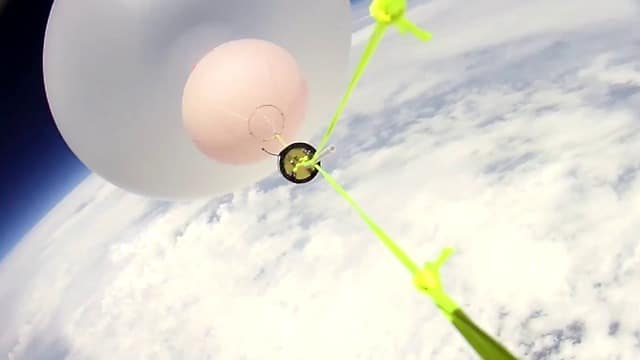How useful are weather balloons?
Weather balloons are important to our survival. One of the misconceptions about weather balloons is that they can only predict when it is going to rain. They are much more dynamic than that, though. Weather balloons help obtain data that can anticipate oncoming disasters such as tornadoes, floods, thunderstorms, and much more. The data and video they can provide for scientists of all ages is truly amazing.
Can weather balloons be dangerous?
Weather balloons are safe when used properly. A weather balloon project needs to be thought out and prepared carefully. Remember, you are launching something into space, so it is important to take safety precautions. It is key to be sure that your equipment is properly fastened and installed to avoid injury. When launching weather balloons, double check to ensure there is an attached parachute. The parachute will slow the balloon to a safe speed when your payload falls back to earth.
In rare cases, weather balloons run into airplanes or other flying objects. Part of preparing for your weather balloon launch is to draw out your weather balloon’s path and plan carefully. No license is required in the United States, but it is critical that your team has partaken in the correct training prior to flight. StratoStar has years of experience in training scientist of all ages. There are many regulations on what you are allowed to launch. For more information on government guidelines check out our FAQ page.
How often are weather balloons used?
High-altitude weather balloons are frequently used by all types of organizations. NASA uses the balloons to perform near space experiments, to collect cosmic dust from meteor showers, and much more. NASA also uses weather balloons prior to rocket launches to ensure weather safety. They have even thought about using specially designed weather balloons to orbit around Mars.
Why do weather balloons pop?
Ever wonder why exactly weather balloons pop? As the balloons rise away from Earth, the air thins. This means there is less air pushing on the balloon’s exterior. Because of the shortage of air pressure, the gas filled balloon expands. And then we all know what happens when a balloon expands too much… it pops!
StratoStar loves to educate readers on weather balloons. We would also love partaking in launch with you. Our team can help your school have a safe, enjoyable launch. Take a closer look at home weather balloons can impact all four areas of STEM with our FREE e-book download.



